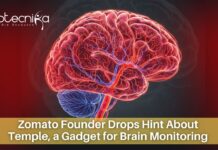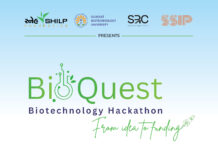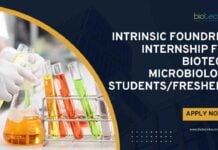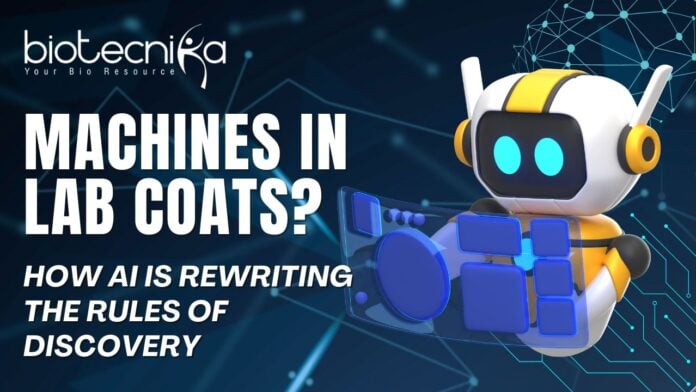AI in the Lab: How AI Is Rewriting the Rules of Discovery
Hold your pipettes, science enthusiasts, the world of science isn’t what it used to be. Soon, the white coats, messy notebooks, and slow-motion breakthroughs might be things of the past. Wondering why? The new game-changer has officially checked in. No, this is not a plot of some sci-fi movie; this is real life. And it’s faster than our expectations, and it’s none other than machine learning.
AI in the Lab
In case you missed it in your busy schedule, machine learning (ML) is unlocking the scientific mysteries, especially in medicine. You read it right, ML is marching straight into solving the puzzle of medicine. From decoding the secrets of Alzheimer’s to designing personalized drugs, ML is not just a step in the research protocol. It is the research process. Let’s dive deep into this revolutionary unfolding of science and medicine.
From Microscope to Megabytes: The Science Shakeup With AI in the Lab
Do you remember how scientists used to struggle to find the answers to a single question? But not anymore. Today we have large complex data, and genome sequencers are on a run. This is the reality of today’s modern science. We have a large set of data, but not enough people to work on it. The algorithms designed by the experts are not able to keep up. And we need more manpower to handle these huge datasets.
This is where the ML comes into play. Slides in with the cool looks, wearing a hoodie instead of a lab coat. Acting as a lab assistant with Eidetic memory, high energy, and zero coffee breaks. All you need to do is feed the data and sit back, let the ML do the heavy lifting. It spots trends, recognizing patterns, and sometimes, just sometimes, going beyond our imagination.
Deep Learning: From Picture Guessing to Protein Folding With AI in the Lab
ML did not become a star overnight, and it started with photo tagging. Yes, not in the lab, not with something far less glamorous.
The story of ML starts with it barely recognizing a cat. You read it right, in 2010, the system was not able to recognize the cat until the programmer said that’s how a cat looks. Then came AlexNet, a neural net that taught the computers how to learn all by themselves. With the help of a public photo database and a few thousand video game graphics processors, AlexNet was able to reduce its error rate. It made it clear that machines can do more than just follow the instructions. They taught themselves.
This self-taught system led to the development of AlphaGo in 2016. This Google DeepMind creation made the unthinkable a reality. It defeated the titleholder of the ultra complex game Go. With its “Move 37,” it left everyone speechless. It was not just any other tricky move but an innovation. A move beyond human imagination was literally the end of the game.
With the same energy in 2020, DeepMind’s AlphaFold2 cracked the core biological problem: protein folding. The one that would take months was solved in just a few seconds. By just inputting the amino acid chain, and boom, there comes the 3D structure.
This technological move has changed the way we design drugs and our understanding of diseases. It gave us insights into the molecular level of the biological world. And the Nobel Prize in Chemistry embraced AlphaFold’s creators in 2024. Deserved.
Hospitals of the Future? Think Algorithms, Not Appointments
Imagine the doctor knowing about the development of sepsis even before any symptoms show up. Or a personalized treatment based on genes, gender, age, and medical history. A future with no more one-size-fits-all medicine. This is not a dream but a reality already being tested.
The experts have developed ML algorithms that can predict diabetic retinopathy, sepsis, and even early-stage Alzheimer’s. Maybe in the near future, it will be considered malpractice not to consult the machine before diagnosing. You might trust the doctor’s laptop more than the doctor herself. Only time will answer.
Oh, let’s not forget the weather. The ML models are making history by predicting seasonal rainfall and natural climates accurately. Robots are turning into science’s new weathermen.
The Democratization Bomb: Free Tools, Free Knowledge, Fast Progress With AI in the Lab
These technological masterminds do not belong to only a particular set of people. With open-source tools like PyTorch and TensorFlow, now everyone can be part of a new, innovative future. The barriers have collapsed, all thanks to endless YouTube tutorials, online courses, and GitHub projects.
You will see the high school kids writing algorithms and college students building the diagnostic tools for rare diseases. The playground of science is open for all, and the smartest player can be just a 10-year-old kid. Once, science was confined to labs with million-dollar instruments, but today it’s all about the code.
So, Will AI Replace Scientists?
The answer to this question is NO. ML cannot replace scientists. Not yet, it can analyse data, identify trends, and even surprise us.
But it can’t think.
Human beings are the ones who ask questions, design the experiments, and connect the dots. A machine cannot explain why a discovery matters. It has no intuition or curiosity. It does not get excited when it discovers something new. It just calculates and presents you with the results.
Think about what will happen when machines start reading every research paper we write. What if they start to ask questions? What if they test hypotheses or publish papers just like us? This is not a sci-fi movie plot or wild imagination, but an inevitable future. In today’s world, the top researchers are not the professors, but algorithms is.
The Bottom Line: Science Will Never Be the Same Again With AI in the Lab
We are at the turning point where it’s not just the technology but human beings. For decades, we have gone through slow, painful, and deeply human-involved research. We ran experiments, interpreted data, and wrote papers. But now it has fast-tracked, scalable, and data-driven discoveries.
So yes, it’s a golden age of discovery — not just because of what we know, but because of how we’re finding it out. And if you’re still stuck on the idea that science is just test tubes and textbooks, you’re already behind.
The labs of the future won’t look like scenes from a documentary. They’ll look like server rooms, glowing with rows of GPU clusters, humming with the quiet arrogance of code that knows it’s smarter than you.
Verdict: The machines aren’t just assisting us anymore. They’re leading the charge. And if science is a race, then machine learning just laced up its shoes — and it’s running like hell.
So buckle up. The lab just got an upgrade. And the real discoveries? They’re just getting started.























